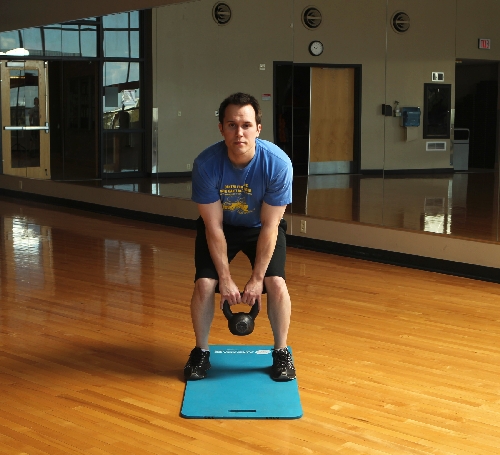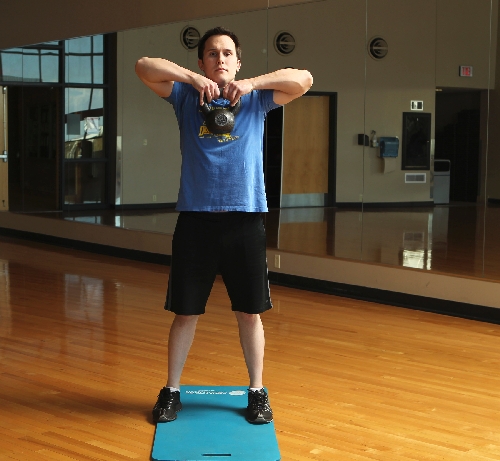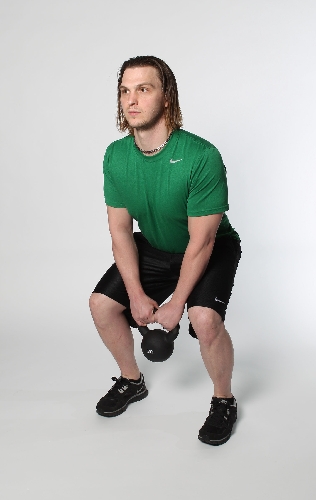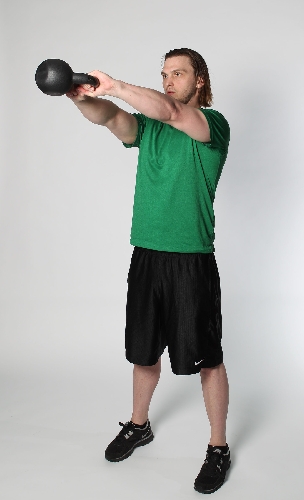For stronger posterior, try answering the (kettle) bell
Do you hate doing cardio? Try combining your cardio and weight training by using kettle bells.
Kettle bells are like cannon balls with handles attached. I like them because they work the body's posterior chain very well -- mainly the hamstrings, glutes and back. If you're looking to tone the legs, buns and upper back and burn serious calories at the same time, then kettle bells will probably become a part of your routine.
Having the basic squat mechanics down is necessary for this exercise. No sense trying this if you're still having trouble keeping knees in line, heels on the ground and back straight. See my column on the squat at www.lvrj.com/columnists/Chris_Huth.html to perfect your squats.
The kettle bell upright row is a basic kettle bell exercise. It conditions you to use your legs to explode while moving the kettle bell in synchronization. Kettle bell swings take the upright row to the next level. They require a bit more synchronization to time the swing with your initial explosion upward.
When I describe most exercises, I'm picky about not swinging or using momentum. But kettle bells actually require it. So swing away. Using explosive movements and momentum with a controlled form will help your body better produce force. Kettle bells are a generally safe way to do this. Compared with other exercises in which using hundreds of pounds is normal, kettle bells provide a good workout with less weight. Beginners start with 5 to 10 pounds and those more advanced can use 35 to 75 pound kettle bells.
The kettle bell movements also transfer well into your everyday tasks. Lifting cases of water for example uses the same mechanics as many kettle bell exercises. Like many kids, my young nieces like the rush of being thrown in the air. So I use the form of a kettle bell swing to entertain them while being safe on my joints and back (and not letting go of them).
Keeping the back straight during the kettle bell upright row and the swing is important. First, it is part of a proper squat. Second, the back is being worked by the action of stabilizing itself. When the muscles of your back are contracted, they surround your spine with stabilizing strength. This is what the spine likes, to be secured.
Kettle bell repetition ranges can differ from traditional weight repetition ranges. I tell clients they should use two weights. First, a lighter weight they feel comfortable doing 50-60 swings with. Second, a slightly heavier weight they feel comfortable doing 15-20 swings with. Do 15 to 20 reps for two to four sets in a circuit or if you're just doing them as part of a leg day. Perform 50 to 60 reps if you're looking to supplement cardio. Two to four sets should make you good and tired.
Chris Huth is a Las Vegas trainer. You can contact him at 702trainer@gmail.com. Before beginning any exercise program, consult your physician.





















